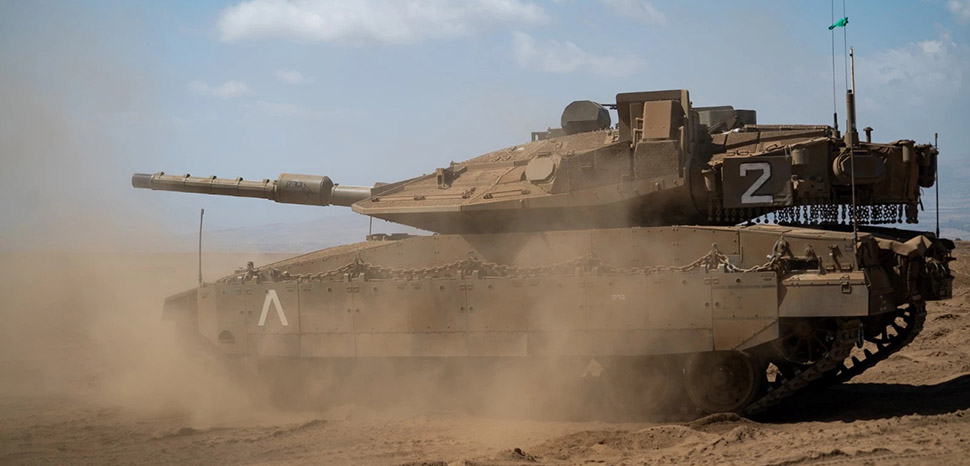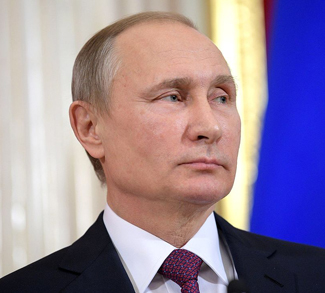In the last few decades, violent clashes between Israelis and Palestinians have been intermittent. This enduring drama has brought terrorist acts, riots, uprisings, targeted assassinations, failed diplomatic talks, conventional and unconventional attacks and endless revanchism, as well as the direct and indirect participation of outsiders. Since the conflict remains unsettled, the underlying mutual hostility has never subsided. It has now resurfaced again, and with this most recent iteration comes with unprecedented risks, especially in an uncertain international environment shaped by growing strategic rivalries. Considering the dangerous proportions and far-reaching implications of this rematch, it would be accurate to define it as the fifth Arab-Israeli War. The conflict has the incendiary potential to spread like wildfire and engulf the entire region and even to attract the involvement of external great powers. In order to keep things in perspective, this episode represents the tensest moment in the Levant since the Yom Kippur War. As of this writing, the situation is in flux, but it looks like it foreshadows larger and more impactful events that may reshuffle the regional balance of power for generations to come. The end of the Middle Eastern status quo is likely coming. Therefore, a scrutiny of this present crisis based on a long-range analytical perspective is pertinent to decipher its instructive lessons.
Lesson 1: There is no such thing as a rules-based order.
By now, it should be clear that the belief in the post-Cold War era as a turning point which would bring global peace, co-operation, and prosperity has been mugged by reality. Moreover, the dream that the ‘Arab Spring’ would push the MENA region towards the direction of “progress” has been buried by nightmarish events. The spectre of war haunts the current international system in a way not seen since WW2. As anarchy is running amok, the level of tension in simultaneous flashpoints (including Eastern Europe, the Caucasus, the Indo-Pacific and the Levant) remains high. In this regard, the ongoing conflict in the Middle East between Israel and Hamas is merely the final nail in the coffin of the ‘end of history.’ In this confrontation, even the most basic rules of war —let alone the full prescriptions of international law— are being intentionally disregarded and, when belligerents think that their very survival is at stake, anything goes, including bloodshed. Specifically, Hamas is responsible for the gruesome execution of hundreds of unarmed Israeli civilians, whereas Israel’s retaliation is seeking not just the elimination of Hamas, but also a Carthaginian peace in which Gaza is no longer livable, even if such outcome requires a deliberate humanitarian disaster. Both sides seemingly believe that their own ruthlessness is justified and necessary under the circumstances, but they are also overlooking Machiavelli’s warning about the counterproductive fallout of unrestricted cruelty. Together, these tragic events demonstrate that the only rule which really matters is that —as the Athenian historian Thucydides wrote thousands of years ago— the strong do what they can and the weak suffer what they must. States can afford to ignore this harsh truth if they want, but they cannot neglect the consequences of ignoring it only because it sounds unpalatable. At best, the “rules-based order” is a delusion, if not an outright intellectual fraud.
Lesson 2: The permutations of war are endless.
War is a kaleidoscopic phenomenon. Its underlying logic as the extension of politics though other means remains unchanged, but its grammar is evolutionary, flexible and increasingly complex. One of its transformations is the growing participation of nonstate forces as belligerents in conflicts. In this confrontation, a nonstate militia (i.e. Hamas) decided to engage a state with superior firepower, weaponry, technological assets and intelligence capabilities. The attacks launched by Hamas combined contrasting elements, including exceedingly sophisticated operational tactics (such as the use of paragliders) and brutal acts that can only be described as a revival of stone-age tribal warfare (e.g. raids, indiscriminate carnage, rape, abduction of hostages, looting and pillaging). Considering the resources that were needed for the “Storm of Al-Aqsa,” it remains unknown if the devastation unleashed by Hamas was supported with logistics, cash, materiel, technology or intelligence by the Islamic Republic of Iran.
Although unconfirmed, Iranian involvement would be consistent with Tehran’s modus operandi as the mastermind behind a constellation of militant proxies, the pursuit of regional hegemony as the goal of its grand strategy, and its apocalyptic religious ideology. Furthermore, as Israel’s intelligence chiefs have noted, there is an undeclared and hybrid war between Jerusalem and Tehran. Yet both regional powers have not clashed directly with kinetic instruments of power projection. Instead, they have been fighting indirectly through cyberwarfare, targeted killings, covert operations, and proxy battles. However, an escalation could lead to a direct conflict. Furthermore, the Israeli counteroffensive relies on traditional ingredients like airstrikes and the military mobilizations for a full-scale invasion or siege of Gaza, but it also involves unconventional measures such as the suspension of water, fuel, electricity, and fuel supplies to Gazan territory. Many observes interpret these reprisals as a collective punishment, but their objective is more likely to elicit either a humiliating surrender or an exodus. Last but not least, another remarkable feature of this conflict is the intensive dissemination of black propaganda and disinformation throughout the info-sphere, even more so than in the context of the Ukraine War. Admittedly, psychological warfare is as old as dirt, but its widespread projection through social media platforms is dangerously increasing the spillover of the conflict well beyond the actual battlefield, fueling acts of aggression in the streets of American and European cities. After all, strong emotional reactions triggered by distorted or partisan perceptions can be weaponized for lethal purposes. In a nutshell, modern warriors need to embrace permanent change as a constant.
Lesson 3: Geography is a driver of confrontation.
As living organisms, states are driven by impersonal forces to engage in a constant Darwinian struggle over the strategic control of space in order to secure the Lebensraum that is needed to protect their survival, strengthen their position, and harvest resources. This principle is one of the key assumptions of geopolitical thinking, an interpretative model which understands international relations through the lens of ‘historical security materialism.’ In this regard, as the Eastern flank of the Mediterranean, the Levant has always been fought over by Western and Eastern empires because it is a platform for the projection of power through both land and sea.
Hence, the region’s control is regularly being contested. Moreover, the enduring rivalries between its heterogeneous indigenous populations often add fuel to the fire. In this case, the territorial claims of Israelis and Palestinians are mutually exclusive. Israel needs to increase its strategic depth and to ensure a favorable demographic balance. In Gaza, the Israelis want to make sure that this corridor does not become a spearhead that can directly threaten Israeli targets. Another Israeli interest in Gaza is the control of its offshore deposits of natural gas. In contrast, Hamas is relying on asymmetric tactics to terrorize and demoralize Israeli society to trigger the slow-motion downfall of the Jewish state and also to weaken the territorial control of the West Bank by Fatah. In the backdrop of this drama, Iran’s imperial endgame is the creation of a regional Shiite Crescent —under Tehran’s informal suzerainty— that goes from the Levant to the core of Central Asia.
Therefore, through agitation and militant proxies, Iran has been trying to encircle and envelop both Israel and Saudi Arabia. Moreover, the hostility of the ayatollahs towards Zionism is not purely ideological. Being seen as the champion of the Palestinian ‘cause’ gives them popular legitimacy and influence in the Arab Sunni world, something that the Iranians would hardly achieve through more conventional means as a Persian and Shiite nation. For all intents and purposes, the so-called “two-state solution” as a formula for peace between Israelis and Palestinians is dead. There can only be one state “between the river and the sea” but it is unclear if said state will be Jewish or Arab in the long term. Until now, the balance of power has favoured Israel —by far— but Jerusalem’s mistakes, the sharp asymmetric strategies of its rivals and the seismic shockwaves of the conflict pose meaningful existential challenges. History provides many examples in which comparatively stronger forces have been defeated by weaker enemies. Israel’s policymakers (and everybody else for that matter) cannot afford to ignore these precedents.
Lesson 4: The concept of the political is here to stay.
Aristotle defined man as a political animal. Yet, the essence of politics has nothing to do with elections, negotiations and institutional processes as many liberal thinkers argue. Instead, the quintessential concept of the political —identified by Carl Schmitt— is the collective categorical distinction between friends and enemies. Whether they want it or not, human beings belong to collective structures which share common denominators like language, historical background, religion, worldviews, cultural heritage, traditions, expectations, and so on. However, identities are relational and, by definition, that makes them exclusive of outsiders. In other words, those who belong to the same political lifeform —despite their internal grievances— are “friends” because they are supposed to join forces in the hypothetical case that a group of strangers (i.e. a potential enemy) tries to kill them for whatever reason. Otherwise, they will be crushed. The concept of the political presupposes the prospect of aggression as a latent possibility. That is why most Israelis are willing to forget their differences to rally around the flag under the leadership of Benjamin Netanyahu. Hamas also understands the concept of the political. In fact, this Palestinian group is willing to great lengths to kill as many Israeli citizens —regardless of their individual profiles or views— as possible because they belong to a state seen as its collective existential enemy, even if such impulse comes with what seems like a death wish. This Islamist militia also expected that younger generations of Israelis —especially those who embody the entrepreneurial and high-tech spirit of the so-called “startup nation”— would forget the concept of the political and seek the comfort of business rather than fight back.
The concept of the political is ambivalent in the sense that it is helpful to ensure survival, preparedness, and vitality, but it can also lead to bloodthirsty antagonism. A nation that overlooks the concept of the political can invite its own demise at the hands of its enemies because its people has lost its collective will to fight. Under extreme conditions, the concept of the political can lead to war as an existential negation of a counterpart. In this case, both Israelis and Palestinians know what the concept of the political is all about, including its ominous implications.
Accordingly, this conflict is not the result of a “lack of mutual understanding” as some Western observers naively claim. Instead, both sides understand each other well enough to know that their fundamental interests cannot be reconciled. The diplomatic solutions that have been proposed have all failed because neither side truly wanted peace, only to buy time and manage the conflict until the scores could be settled in a permanent way. Peace was never an option.
Lesson 5: Chaos is a ladder.
Conventional wisdom dictates that, in high politics, order is preferable to chaos. Nevertheless, turmoil —regardless of whether it is intentional or triggered by impersonal forces— can bring strategic windows of opportunity worth harnessing to seek advantages, turn the tables, establish facts on the ground and alter the existing correlation of forces. In this particular case, the attack launched by Hamas has managed to undermine the diplomatic rapprochement between Israel and the Gulf petro-monarchies (mainly the Kingdom of Saudi Arabia). This pursuit most likely intended to reverse the increasing loss of support for Palestinians in much of the Arab world. As a result of a tremendous popular pressure, Arab and Muslim rulers will have no choice but to support the Palestinians in one way or another, even if they dislike Hamas (as the Palestinian branch of the Muslim Brotherhood) behind closed doors. Under the same chaotic circumstances, Israel is trying to get rid of Hamas, restore the credibility of its deterrence, and drive away the population of Gaza.
Jerusalem has realized that it will never be truly loved in the Arab world, but —as the wisdom of Machiavellian realpolitik would suggest— it is seizing the opportunity to make itself feared. Nevertheless, the reflection of this principle goes further. If Iran is indeed the orchestrator and sponsor of the attacks launched by Hamas, then Tehran likely expects to derail the normalization of ties between Jerusalem and Riyadh (its greatest enemies), instigate unrest throughout the Arab world and maybe even generate the critical mass that would be needed to bring down regional regimes seen as too close to the West and Israel. Another hypothetical Iranian purpose could be the proliferation of inter-ethnic tensions and jihadist violence in Western Europe. After all, the Quds Force is perhaps the world’s leading practitioner of irregular warfare and asymmetric tactics in complex battlegrounds. As such, it has a developed expertise in the incitement of ‘popular’ uprisings, sectarian carnage, and terrorist operations.
In sum, Teheran has become exceedingly effective in the weaponization of chaos. Moreover, this disruptive crisis offers opportunities for states not directly involved, such as Russia. For the Kremlin, a war in the Middle East would divert the flow of Western weapons and diplomatic support from Ukraine to Israel. Such development would deepen and accelerate the depletion of supplies for the Ukrainian war effort and give Moscow an upper hand, bolstering its efforts to rewrite the balance of power in Eastern Europe and in various strategic corners of the post-Soviet space in accordance with its national interests. In addition, the mere prospect of a conventional war in the Middle East would bring substantial economic benefits for the Russian Federation due to the resulting increase the international prices of fossil fuels. Finally, China can leverage its pragmatic ties to the key actors (Israel, Iran, and Saudi Arabia) in order to position itself as a credible diplomatic broker whose influence is respected by all relevant stakeholders. If successful, such course of action would be helpful to advance Beijing’s agenda in the Middle East, especially considering that the region is important for the Chinese for both its technological innovations and energy resources. That explains why the ‘Middle Kingdom’ has adopted a policy of neutrality. In international politics, there is never a shortage of those willing to profit from chaos.
Lesson 6: Statecraft must face unintended outcomes.
According to the realist school, statecraft is rational in the sense that it involves the instrumental use of power, capabilities, resources, and assets in the pursuit of national interests. Therefore, when states walk the dangerous path of war as official policy, they expect that the benefits will outweigh both the risks and costs. However, miscalculations can lead to unforeseen externalities and the influence of the “domino effect” can set in motion chain reactions. In addition, decisions made in times of crises can backfire if they are not based on accurate strategic intelligence. In this case, the attack launched by Hamas against Israel can conceivably lead to its own (political and maybe even material) demise as a result of Jerusalem’s counterstrike. This principle also applies to Israeli behavior. Guided by raison d’état, Israel covertly nurtured the growth of Hamas as a competing faction of Fatah because their mutual animosity could lead to a Palestinian political schism. Such objective was achieved, but Hamas is now a deadly creature that has managed to corner Fatah, wage jihad against Israel, court Iranian patronage and gain the enthusiastic grassroots support of millions of Arabs and Muslims. To keep things in perspective, Hamas is (singlehandedly?) responsible for the worst massacre of Jewish civilians since the Holocaust. Moreover, Israel is now —notwithstanding its overwhelming military superiority— awkwardly caught between a rock and a hard place. If the Israelis do not respond decisively, the resulting perception of weakness will strengthen the resolve of all sorts of jihadist militants to attack Israeli targets. However, if Israeli reprisals are too harsh, they might be a recipe for disaster in the long run. Israel has what is takes to flatten Gaza, but the resonance of such tactical victory will most certainly bring a very unpleasant strategic blowback. Such trajectory might ignite a spark with the potential to overthrow Arab regimes seen as Israeli partners, either official or unofficial (such as Egypt, Jordan, and Saudi Arabia). The resulting power vacuum would be rapidly leveraged by Tehran and its regional pseudopods.
Ironically, Israel may unwittingly facilitate the rise of Iran as a regional hegemon on the chessboard of the Greater Middle East. Perhaps an even greater irony is the fact that the resurgence of the Persian imperial tradition in the 21st century cannot be understood without the opportunities brought by the chaotic aftermath of the US military interventions in both Afghanistan and Iraq.
Lesson 7: ‘Homo Economicus’ does not override ‘Animus Dominandi’.
According to the liberal school of thought in political economy, the profits of free trade and economic exchanges can ensure the prevalence of a ‘Pax Mercatoria’ in which peoples can do business with each other rather than wage war. Yet, this simplistic view is based on an inaccurate view of human nature. Humans are driven by an Animus Dominandi, defined by Hans Morgenthau as an inherent inclination to rise above their peers in the pursuit of power, control, and security. In this regard, Israel offered the carrot of economic benefits to Palestinians as a measure intended to discourage conflict. For a while, this course of action was seemingly working well. In 2021, Gaza’s GDP per capita (3,664 USD) was higher than that of Egypt (3,019 USD), the largest country of the Arab world. However, people are —more often than not— willing to sacrifice economic benefits if that is the price that needs to be paid in order to defeat an enemy. That is why the usefulness of economic sanctions is limited to deter aggressive behaviors. If what liberal economists hold is true, then people would not be willing to die and kill in war. Trading with an enemy can be profitable, but the resulting proceeds do not erase mutual hostility. Accordingly, Hamas was not sacrificing its political outcomes in exchange for money. The Islamist militia was just literally buying time until it could be strong enough to harm and humiliate Israel in a painful way. In turn, Israelis became dangerously complacent. Since they have not fought a conventional conflict in generations, the traditional spartan-like warrior ethos of Israeli was being replaced by the mindset of high-tech merchant princelings. As a ‘startup nation,’ younger generations of Israelis sought to join the country’s innovative industrial sectors that are furthering the frontiers of advanced technologies. In the meantime, Israeli strategic culture favored the development of intelligence, cyberwarfare and special operations forces rather than conventional mobilizations. Finally, in a likely attempt to pursue some sort of détente with Tehran, the Biden administration unfroze 6 billion USD worth of Iranian assets. Yet, the Islamic Republic of Iran is more hawkish than ever before and it seems determined to fight Israel to the last Palestinian. In the grand scheme of things, economics is the extension of politics through other means, but not an alternative.
Lesson 8: Colliding ideologies as catalysts of war
This conflict is not just being driven by territorial, strategic, or political reasons. The atmosphere of mutual hostility between Hamas and Israel is being exacerbated by militant ideological and religious worldviews. In comparison to previous Arab-Israeli wars, religion is at the forefront of this ongoing confrontation. Since the creation of Israel (a state founded by European Jews), Zionism was mostly a secular movement that blended tenets of nationalism, socialism, and liberalism. That is no longer the case. Nowadays, key positions of the Israeli government are in the hands of hardliners whose positions represents religious Zionism, Caesarist tendencies, and even theocratic aspirations. Something similar can be said about Palestinians. Until not long ago, Fatah was the dominant political faction in Palestine and it still rules in the West Bank; but it has basically faded into oblivion. This nationalist secular movement was the Palestinian branch of Baathism. However, its diminishing legitimacy, political failures, incompetence, and rampant corruption —along with the proliferation of jihadism on a global scale— have created conditions for the empowerment of militant Islamists which embrace a messianic ideology with eschatological undertones. Interestingly, both sides in this conflict embrace illiberal ideologies, both of which are increasingly uncompromising. And a confrontation in which the protagonists are zealots rather than cynical statesmen guided by self-interest is exceedingly dangerous.
*This article was originally published on October 16, 2023.
The views expressed in this article belong to the authors alone and do not necessarily reflect those of Geopoliticalmonitor.com.




